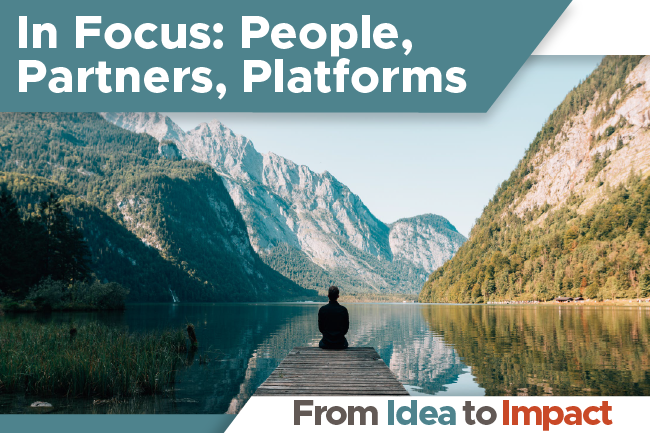People, Partners, and Platforms: The 3Ps that Energize Philanthropy

Last summer, I published a report called “Moving Beyond Theories of Change,” designed to help more funders and social innovators go from big bets to big builds (as Inside Philanthropy recently put it) by means of what I’ve previously called “strategic implementation.” The report is built around a framework that the Arabella team uses as we help clients think through the complex challenges they face. We call the framework “the 3Ps” as it refers to the People, Partners, and Platforms that undergird and energize philanthropic efforts.
Since we published the report, a number of folks have asked me, “What do you mean by the 3Ps?” In brief, the Ps break down as follows.
People
Successfully advancing a social-change effort requires carefully considering and constructively working with people at every point on the journey—from people within your own foundation to people with whom you collaborate and from service providers and platform managers to grantees, stakeholders, influencers, and beneficiaries. It therefore requires a wide range of people-management skills and capacities: facilitation, convening, collaboration, communication, and more.
All too often, our sector has underinvested in people, who provide both the means and the motive for social-change efforts. And all too often, social-change efforts have failed precisely because of such neglect. Even as the toolkit for social impact changes and grows, this fundamental truth will remain.
Partners
At the same time, every philanthropic field includes a wide variety of organizations, programs, and partnerships that work—sometimes collectively, sometimes not—toward social-impact goals. Likewise, every such field includes a wide range of organizations that are connected to or potentially affected by the impact goals pursued. Failing to understand the work of these stakeholders—and to choose among them the right set of partners with which to align and/or collaborate—is almost as harmful to philanthropic impact as is failing to center the people who always move it forward.
As the social change toolkit expands to include socially responsible businesses, advocates, and grassroots changemakers, alongside more-established nonprofit organizations, the number of possible partners is also expanding.
Platforms
The past decade has demonstrated how a variety of legal and organizational structures—including limited liability companies (LLCs), 501(c)(4) social welfare organizations, and impact investing funds—can be employed to achieve social impact. We think of such organizational structures as platforms, which may open up new potential pathways from idea to impact and which also may work with and through different partners and people.
Having a variety of platform options—including options to use multiple platforms in integrated ways—enables donors and foundations to assess their impact goal in the context of the best vehicles for achieving them. In other words, we are no longer bound to devising a grant-making initiative where, say, creating a new LLC might be more aligned with the strategy. Or we can use a fiscal intermediary platform to combine these approaches in a way designed to achieve one, integrated goal.
Fifteen years of continuous practice has taught the team at Arabella to think closely about each of these Ps—and how they integrate and interrelate—as we help our clients and partners design and implement their strategies and move from idea to impact. In the coming year, we will look to build upon and share more based on our collective experience with this framework, and we invite you to join us along the way. If you’re interested in learning more, click here to download the full report or send us an email with your questions.
